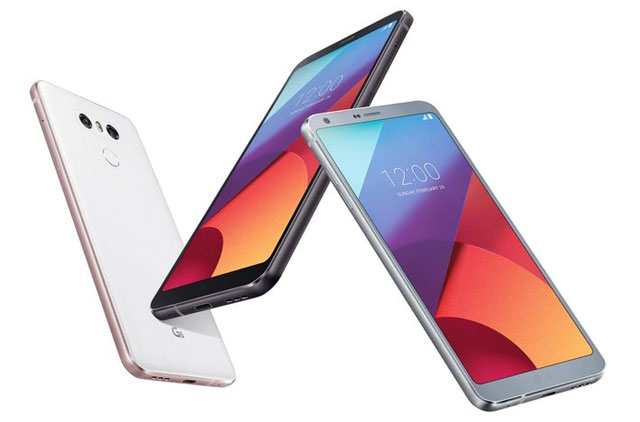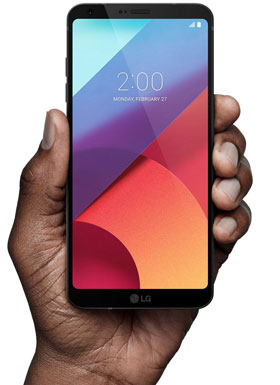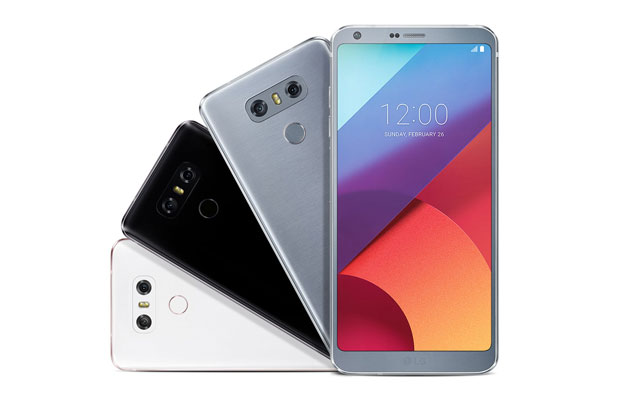
LG Electronics made a mistake with the 2016 iteration of its flagship Android smartphone. The modular design it used with the LG G5 was a commercial dud. The Korean company has, however, learnt from its mistake, and the G5’s successor, the G6 (what else?), is a fantastic high-end device.
In our three weeks of using it, we found the G6 to be a reliable workhorse, able to fade into the background (as any good technology should), allowing us to focus on being productive. Next to its main competition, rival Samsung Electronics’ new flagship, the Galaxy S8, the G6 is decidedly “unsexy”. That will cost it sales. But if you’re in the market for a new, high-end Android smartphone, you could end up kicking yourself for not considering the LG.
Why? LG has a solid track record in delivering high-quality phones. Both the G2 and G3 were well received by reviewers. Even the pricier leather-backed G4 garnered a legion of fans. But LG decided to experiment with the G5, creating a modular design that, unfortunately for the company, failed to capture the hearts of and minds of consumers. We can’t blame LG for trying. Equally, we can’t blame the company for quickly abandoning something that didn’t work, although users who bought into the modular approach and forked out good money for the G5, and buying hardware add-ons for it, probably feel quite aggrieved.
That’s history, though, and the G6 must stand and be judged on its own. And let it be said: it’s a great smartphone. Like Samsung’s S8, the LG is all about the screen. LG has eschewed the curved, edge-to-edge display of its rival, meaning it doesn’t have the same design appeal, but the bright, tall, 5,7-inch LCD (resolution: 2 880×1 440 pixels; aspect ratio: 18:9) is nevertheless gorgeous to look at. It might not be quite edge-to-edge like the S8, but there’s still very little bezel to be found here. The taller aspect ratio and the tiny bezels clearly show the direction smartphones are headed in 2017 and beyond.
 The 163g device, which is 71,9mm wide and 148,9mm tall, feels entirely comfortable in one’s hand, despite the 5,7-inch display. This is down to the reduced bezel size. Heck, even the 6,2-inch Galaxy S8+, which we’ve had a chance to play with (but not review yet), fits comfortably in one hand. Clearly, the trend to bigger phones is not done yet!
The 163g device, which is 71,9mm wide and 148,9mm tall, feels entirely comfortable in one’s hand, despite the 5,7-inch display. This is down to the reduced bezel size. Heck, even the 6,2-inch Galaxy S8+, which we’ve had a chance to play with (but not review yet), fits comfortably in one hand. Clearly, the trend to bigger phones is not done yet!
The G6, announced at Mobile World Congress in Barcelona, Spain February, is a beast under the bonnet. It has a Qualcomm Snapdragon 821 processor (not quite as powerful as the 835 in the S8, but still plenty fast). It has 32GB of RAM (in the variant sold by LG in South Africa — we would have preferred 64GB) as well as 4GB of RAM and a range of connectivity options (including LTE category 12 mobile data — offering an entirely theoretical download speed of 600Mbit/s).
The G6 has a 3 300mAh battery, which provides what seems to us to be average to perhaps slightly above average battery life for a high-end smartphone. We typically made it to 9pm or even 10pm on a moderate-use day, while we had to reach for the charger by early evening when we used the phone intensively during the day.
Other hardware in the G6 includes Wi-Fi up to the dual-band 802.11ac variety (plenty speedy), plus GPS, assisted GPS, Glonass (the Russian satellite navigation system) and even BeiDou (the Chinese version of GPS). SD cards of up to 256GB in size can be added to expand the base 32GB of storage — nice!
The rear-facing dual-camera system is impressive, even in relatively low-light conditions (some sample shots taken using the camera software’s automatic mode are included below). The cameras are a highlight of the G6, and shutterbugs would do well to consider this as their next phone (along with the S8, of course).
The two rear cameras on the G6 have twin 13-megapixel sensors. The first has a f/1,8 lens with optical image stabilisation, while the second one has a wide-angle, f2,4 lens without OIS.

We’re not going to pretend we’re photography experts (for a more detailed look at the cameras, have a look at Greenbot’s comparison between the G6 and the Google Pixel), but in terms of picture clarity, saturation and colour, we really like what we see. And the phone does a good job in less than ideal light conditions (no doubt aided by the wide aperture and IOS).
The G6 will let you shoot video at 60fps in full HD and at 30fps at 4K. Video can be shot in both 18:9 format (the same as the screen) and the more common 16:9 format. The big, bright display is fantastic for viewing both video and as a viewfinder for taking stills. There’s even a mode for taking enhanced images of food (perfect for the foodies on Instagram who insist on posting their meals for all to see). There are also slow-mo, panorama and 360-degree panorama options.


The G6 runs Android 7.0 and, as with previous G-series devices from LG, the overlays it’s added to the operating system are relatively minimal — and that’s just the way we like it. The weird “stretchy” screen effect when one flips to the end of the available homescreens to the left or right is still there, but hey, it’s more quirky than annoying. We also like the (optional) “Smart Bulletin” screen, which provides a quick overview of important information, including calendar entries, LG Health statistics and music playback (though the latter doesn’t work with streaming music services).
In all, the G6’s Android experience is sleek and easy to use. We just hope LG gets quicker at pushing out OS updates.
In summary, then, the LG G6 is a fantastic return to form for the Korean consumer electronics firm. The phone is a workhorse that fades into the background, like all good technology should do. Its only problem is its coming up against the Galaxy S8, which, let’s face it, is a much bolder-looking and arguably sexier-looking device. But don’t let this put you off considering the G6 as your next phone. It is one of the best phones on the market today. And, in its simpler, all-metal-and-glass design, it has an air of elegance and sophistication — and even maturity — about it. — © 2017 NewsCentral Media
- The LG G6 has a recommended retail price of R12 099




